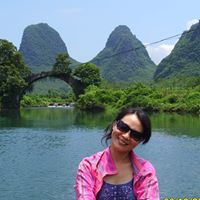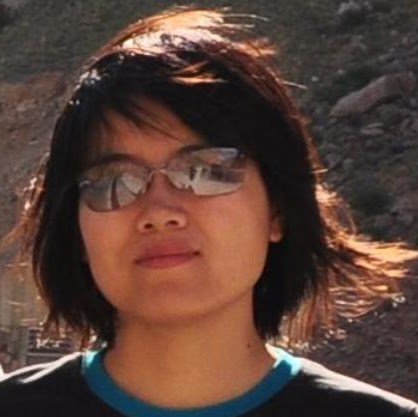Ling X Zhang
age ~46
from Boxborough, MA
- Also known as:
-
- Ling F Zhang
- Li Zhang
- Zhang Ling
Ling Zhang Phones & Addresses
- Boxborough, MA
- 8338 Regents Rd UNIT 2N, San Diego, CA 92122
- 112 De Montfort Ave, San Francisco, CA 94112
- San Jose, CA
- La Jolla, CA
- Sioux Falls, SD
Work
-
Company:Brigham and Women's Hospital
-
Address:75 Francis Street, Boston, MA 02115
Education
-
School / High School:St. Louis University School of Law
Languages
English
Ranks
-
Licence:New York - Delinquent
-
Date:2007
Specialities
Social Work • Clinical Social Work
Us Patents
-
High Brightness Led Utilizing A Roughened Active Layer And Conformal Cladding
view source -
US Patent:8232568, Jul 31, 2012
-
Filed:Aug 21, 2009
-
Appl. No.:12/545358
-
Inventors:Ling Zhang - San Jose CA, US
Steven D. Lester - Palo Alto CA, US
Jeffrey C. Ramer - Sunnyvale CA, US -
Assignee:Bridgelux, Inc. - Livermore CA
-
International Classification:H01L 33/00
-
US Classification:257 94, 257 98, 257190, 257E51021
-
Abstract:A light emitting device and method for making the same are disclosed. The device includes an active layer disposed between first and second layers. The first layer has top and bottom surfaces. The top surface includes a first material of a first conductivity type, including a plurality of pits in the substantially planar surface. The active layer overlies the top surface of the first layer and conforms to the top surface, the active layer generating light characterized by a wavelength when holes and electrons recombine therein. The second layer includes a second material of a second conductivity type, the second layer overlying the active layer and conforming to the active layer. The device can be constructed on a substrate having a lattice constant sufficiently different from that of the first material to give rise to dislocations in the first layer that are used to form the pits.
-
Led With Improved Injection Efficiency
view source -
US Patent:8525221, Sep 3, 2013
-
Filed:Nov 25, 2009
-
Appl. No.:12/626474
-
Inventors:Steven Lester - Sunnyvale CA, US
Jeff Ramer - Sunnyvale CA, US
Jun Wu - Irvine CA, US
Ling Zhang - San Jose CA, US -
Assignee:Toshiba Techno Center, Inc. - Tokyo
-
International Classification:H01L 33/00
-
US Classification:257101, 257E2712, 257 79, 257 12, 257 1, 257 15, 438 22, 438 29, 438 42, 438 43, 438 44
-
Abstract:A light emitting device and method for making the same is disclosed. The light-emitting device includes an active layer sandwiched between a p-type semiconductor layer and an n-type semiconductor layer. The active layer emits lights when holes from the p-type semiconductor layer combine with electrons from the n-type semiconductor layer therein. The active layer includes a number of sub-layers and has a plurality of pits in which the side surfaces of a plurality of the sub-layers are in contact with the p-type semiconductor material such that holes from the p-type semiconductor material are injected into those sub-layers through the exposed side surfaces without passing through another sub-layer. The pits can be formed by utilizing dislocations in the n-type semiconductor layer and etching the active layer using an etching atmosphere in the same chamber used to deposit the semiconductor layers without removing the partially fabricated device.
-
Led With Improved Injection Efficiency
view source -
US Patent:20130316483, Nov 28, 2013
-
Filed:Aug 5, 2013
-
Appl. No.:13/959297
-
Inventors:STEVEN LESTER - SUNNYVALE CA, US
JEFF RAMER - SUNNYVALE CA, US
JUN WU - IRVINE CA, US
LING ZHANG - SAN JOSE CA, US -
Assignee:TOSHIBA TECHNO CENTER INC. - Tokyo
-
International Classification:H01L 33/06
-
US Classification:438 47
-
Abstract:A light emitting device and method for making the same is disclosed. The light-emitting device includes an active layer sandwiched between a p-type semiconductor layer and an n-type semiconductor layer. The active layer emits light when holes from the p-type semiconductor layer combine with electrons from the n-type semiconductor layer therein. The active layer includes a number of sub-layers and has a plurality of pits in which the side surfaces of a plurality of the sub-layers are in contact with the p-type semiconductor material such that holes from the p-type semiconductor material are injected into those sub-layers through the exposed side surfaces without passing through another sub-layer. The pits can be formed by utilizing dislocations in the n-type semiconductor layer and etching the active layer using an etching atmosphere in the same chamber used to deposit the semiconductor layers without removing the partially fabricated device.
-
Sars-Cov-2 Spike Protein Antibodies
view source -
US Patent:20220372114, Nov 24, 2022
-
Filed:May 17, 2022
-
Appl. No.:17/746768
-
Inventors:- Albany NY, US
Dan LUO - Newark CA, US
Ling ZHANG - Menlo Park CA, US
Vydehi KANNEGANTI - Hayward CA, US
Joyce YU - Menlo Park CA, US
Sophie YANG - Mountain View CA, US
Lequn ZHAO - San Francisco CA, US
Hua TU - Flower Mound TX, US -
International Classification:C07K 16/10
A61P 31/14 -
Abstract:The present disclosure provides antibodies that bind to the SARS-CoV-2 spike protein, as well as compositions containing the same, and methods of making and using such a composition for treating, preventing, and/or detecting SARS-CoV-2 infection.
-
Sars-Cov-2 Spike Protein Antibodies
view source -
US Patent:20230115257, Apr 13, 2023
-
Filed:May 17, 2022
-
Appl. No.:17/746859
-
Inventors:- Albany NY, US
Dan LUO - Newark CA, US
Ling ZHANG - Menlo Park CA, US
Vydehi KANNEGANTI - Hayward CA, US
Joyce YU - Menlo Park CA, US
Sophie YANG - Mountain View CA, US
Lequn ZHAO - c/o Curia IP Holdings, LLC CA, US
Hua TU - Flower Mound TX, US
Xiaomei GE - Foster City CA, US -
International Classification:C07K 16/10
G01N 33/569 -
Abstract:Embodiments include monoclonal antibodies (mAbs) that recognize SARS-Cov-2 spike protein. The mAbs are capable of distinguishing among variants of the virus. The present disclosure also provides a composition and methods of making and using such a composition for treating, preventing, and/or detecting SARS-CoV-2 infection.
-
Self-Healing Macromolecular Crystal Materials
view source -
US Patent:20200384440, Dec 10, 2020
-
Filed:Nov 13, 2018
-
Appl. No.:16/763971
-
Inventors:- Oakland CA, US
Jake Bailey - La Jolla CA, US
Ling Zhang - La Jolla CA, US -
International Classification:B01J 20/26
B01J 20/24
B01J 20/28
B01J 20/34 -
Abstract:Hybrid materials are disclosed including molecular/protein crystals integrated with synthetic polymers. The disclosed materials combine the structural order and periodicity of crystals, the adaptiveness and tunable mechanical properties of polymeric networks, and the chemical versatility of protein building blocks. Some of the properties of the disclosed materials include the following: 1) allows crystals—which are typically rigid and brittle—to expand and contract reversibly; 2) incorporates polymers to increase the mechanical toughness of the crystals and allow self-healing; 3) reversibly expand/contract crystal lattices and mobilize the protein components therein may provide a new means to improve X-ray diffraction quality and explore otherwise inaccessible protein structural states using 3D protein crystallography; 4) creation of chemically and mechanically differentiated domains within single crystals. Some example embodiments combine the properties of hydrogels (flexibility, adaptability, elasticity, self-healing), crystals (structural order) and proteins (chemical and genetic tailorability).
-
High Growth Rate Deposition For Group Iii/V Materials
view source -
US Patent:20190272994, Sep 5, 2019
-
Filed:May 14, 2019
-
Appl. No.:16/412328
-
Inventors:- Sunnyvale CA, US
Jason M. JEWELL - Santa Clara CA, US
Chaowei WANG - San Diego CA, US
Ji WU - San Jose CA, US
Emmett Edward PERL - Santa Clara CA, US
Claudio Andrés CAÑIZARES - Morgan Hill CA, US
Ling ZHANG - Saratoga CA, US
Brendan M. KAYES - Los Gatos CA, US -
International Classification:H01L 21/02
C30B 25/02
C30B 25/10
C30B 25/18
C30B 29/42 -
Abstract:Aspects of the disclosure relate to processes for epitaxial growth of III-V compound of (Al)GaInP material at high rates, such as about 8 μm/hr, 10 μm/hr, 20 μm/hr, 30 μm/hr, 40 μm/hr, and 8-120 μm/hr deposition rates. The high growth-rate deposited (Al)InGaP materials or films may be utilized in solar, semiconductor, or other electronic device applications. The Group III/V materials may be formed or grown on a sacrificial layer disposed on or over the support substrate during a chemical vapor deposition process. Subsequently, the Group III/V materials may be removed from the support substrate during an epitaxial lift off (ELO) process. The Group III/V materials are thin films of epitaxially grown layers containing gallium aluminum indium phosphide, gallium indium phosphide, derivatives thereof, alloys thereof, or combinations thereof.
-
Thin Film Iii-V Optoelectronic Device Optimized For Non-Solar Illumination Sources
view source -
US Patent:20160155881, Jun 2, 2016
-
Filed:Jan 25, 2016
-
Appl. No.:15/006003
-
Inventors:- Sunnyvale CA, US
Gregg S. HIGASHI - San Jose CA, US
Sam COWLEY - Mountain View CA, US
Christopher FRANCE - Campbell CA, US
Ling ZHANG - San Jose CA, US
Gang HE - Cupertino CA, US -
International Classification:H01L 31/109
H01L 31/18
H01L 31/0232 -
Abstract:An optoelectronic device with high band-gap absorbers optimized for indoor use and a method of manufacturing are disclosed. The optoelectronic semiconductor device comprises a p-n structure made of one or more compound semiconductors, wherein the p-n structure comprises a base layer and an emitter layer, wherein the base and/or emitter layers comprise materials whose quantum efficiency spectrum is well-matched to a spectrum of incident light, wherein the incident light is from a light source other than the sun; and wherein the device is a flexible single-crystal device. The method for forming an optoelectronic device optimized for the conversion of light from non-solar illumination sources into electricity, comprises depositing a buffer layer on a wafer; depositing a release layer above the buffer layer; depositing a p-n structure above the release layer; and lifting off the p-n structure from the wafer.
Real Estate Brokers

Ling Zhang, San Francisco CA Property Manager
view sourceSpecialties:
Residential sales
Property Management
Property Management
Work:
Sunshine Realty & Investments
San Francisco, CA
650 866-5539 (Phone)
License #01937432
San Francisco, CA
650 866-5539 (Phone)
License #01937432
Client type:
Renters
Landlords
Landlords
Property type:
Single Family Home
Condo/Townhome
Condo/Townhome

Ling Zhang, San Ramon CA Sales & Property Manager
view sourceWork:
Sunshine Realty & Investments
5365 Canyon Crest Dr., San Ramon, CA 95582
650 866-5539 (Office)
5365 Canyon Crest Dr., San Ramon, CA 95582
650 866-5539 (Office)

Ling Zhang, San Francisco CA Agent
view sourceWork:
Sunshine Realty & Investments
San Francisco, CA
650 866-5539 (Phone)
License #01937432
San Francisco, CA
650 866-5539 (Phone)
License #01937432
Lawyers & Attorneys

Ling Jia Zhang - Lawyer
view sourceLicenses:
New York - Delinquent 2007
Education:
St. Louis University School of Law
Specialties:
Advertising - 34%
Corporate / Incorporation - 33%
Communications / Media - 33%
Corporate / Incorporation - 33%
Communications / Media - 33%

Ling Zhang - Lawyer
view sourceSpecialties:
Advertising
Corporate / Incorporation
Communications / Media
Communications / Media
Advertising
Corporate / Incorporation
Communications / Media
Communications / Media
Advertising
ISLN:
924295712
Admitted:
2007
Isbn (Books And Publications)
-
Yi Shi Le De Xixia Wang Guo
view source -
Author:Ling Zhang
-
ISBN #:7805885516
Medicine Doctors

Ling Zhang, Boston MA - LICSW (Licensed Independent Clinical Social Worker)
view sourceSpecialties:
Social Work
Clinical Social Work
Clinical Social Work
Address:
75 Francis St, Boston, MA 02115
617 732-6312 (Phone)
617 732-6312 (Phone)
Languages:
English
Hospitals:
75 Francis St, Boston, MA 02115
Brigham and Women's Hospital
75 Francis Street, Boston, MA 02115
Brigham and Women's Hospital
75 Francis Street, Boston, MA 02115

Ling Zhang
view sourceSpecialties:
Clinical Pathology
Work:
Moffitt Medical GroupMoffitt Cancer Center Pathology
12902 Usf Magnolia Dr, Tampa, FL 33612
813 745-3001 (phone), 813 745-8479 (fax)
12902 Usf Magnolia Dr, Tampa, FL 33612
813 745-3001 (phone), 813 745-8479 (fax)
Education:
Medical School
Fujian Med Coll, Fuzhou City, Fujian, China
Graduated: 1982
Fujian Med Coll, Fuzhou City, Fujian, China
Graduated: 1982
Languages:
English
Description:
Dr. Zhang graduated from the Fujian Med Coll, Fuzhou City, Fujian, China in 1982. She works in Tampa, FL and specializes in Clinical Pathology.

Ling Zhang
view sourceSpecialties:
Physical Medicine & Rehabilitation
Work:
Health South Rehabilitation Hospital
7930 Northaven Rd, Dallas, TX 75230
214 706-8200 (phone), 214 706-8380 (fax)
Star Health & Rehab PA
6715 Pemberton Dr, Dallas, TX 75230
214 808-7704 (phone), 214 987-1475 (fax)
7930 Northaven Rd, Dallas, TX 75230
214 706-8200 (phone), 214 706-8380 (fax)
Star Health & Rehab PA
6715 Pemberton Dr, Dallas, TX 75230
214 808-7704 (phone), 214 987-1475 (fax)
Education:
Medical School
Tongji Med Univ, Wuhan City, Hubei, China
Graduated: 1982
Tongji Med Univ, Wuhan City, Hubei, China
Graduated: 1982
Languages:
English
Description:
Dr. Zhang graduated from the Tongji Med Univ, Wuhan City, Hubei, China in 1982. She works in Dallas, TX and 1 other location and specializes in Physical Medicine & Rehabilitation.

Ling Zhang
view sourceSpecialties:
Pathology
Anatomic Pathology
Hematology
Anatomic Pathology
Hematology

Ling Zhang
view sourceSpecialties:
Physical Medicine & Rehabilitation
Hematology
Anatomic Pathology & Clinical Pathology
Clinical Pathology/Laboratory Medicine
Hematology
Anatomic Pathology & Clinical Pathology
Clinical Pathology/Laboratory Medicine
Education:
China Medical University (1982)

Ling Zhang
view sourceSpecialties:
Anesthesiology
Education:
Xian Medical University, Xian, Shaanxi (1982)
Name / Title
Company / Classification
Phones & Addresses
Social Worker
Childrens and Womens Hospital
Hospital/Medical Service Plan
Hospital/Medical Service Plan
75 Francis St, Boston, MA 02115
MR PANDA USA, LTD
Resumes

Ling Zhang San Jose, CA
view sourceWork:
Currenex, State Street Corporation
Jun 2014 to 2000
Software Engineer Intern Shanghai Jiao Tong University
Sep 2010 to Nov 2012
Research Assistant
Jun 2014 to 2000
Software Engineer Intern Shanghai Jiao Tong University
Sep 2010 to Nov 2012
Research Assistant
Education:
San Jose State University
San Jose, CA
2013 to 2014
MS in Software Engineering Shanghai Jiao Tong University
2012
PhD in Biomedical Engineering UC Berkeley
Berkeley, CA
2008 to 2010
Visiting PhD student Shanghai Jiao Tong University
2005
BS in Biotechnology
San Jose, CA
2013 to 2014
MS in Software Engineering Shanghai Jiao Tong University
2012
PhD in Biomedical Engineering UC Berkeley
Berkeley, CA
2008 to 2010
Visiting PhD student Shanghai Jiao Tong University
2005
BS in Biotechnology
Skills:
Java, Javascript, Node.js, Selenium Junit, Jasmine, SQL, MangoDB, MySQL, AWS, Hadoop, Agile(Scrum), PHP, C++

Ling Zhang Santa Clara, CA
view sourceWork:
Spurlock Poirier
San Diego, CA
Apr 2012 to Jan 2015
Project Landscape Architect Realty Connex
San Diego, CA
Oct 2014 to Dec 2014
Marketing Consultant Landscape Architecture Frontiers Magazine
Feb 2013 to Apr 2014
Translator and Interpreter Intern, School
Charlottesville, VA
Sep 2011 to Dec 2011
Office of the Architect, University of Virginia Turenscape
Jun 2011 to Aug 2011
Intern Charlottesville Pedestrian Mall
2011 to Jan 2011
Researcher, History Charlottesville Community Design Center
Charlottesville, VA
Oct 2010 to Oct 2010
Volunteer
San Diego, CA
Apr 2012 to Jan 2015
Project Landscape Architect Realty Connex
San Diego, CA
Oct 2014 to Dec 2014
Marketing Consultant Landscape Architecture Frontiers Magazine
Feb 2013 to Apr 2014
Translator and Interpreter Intern, School
Charlottesville, VA
Sep 2011 to Dec 2011
Office of the Architect, University of Virginia Turenscape
Jun 2011 to Aug 2011
Intern Charlottesville Pedestrian Mall
2011 to Jan 2011
Researcher, History Charlottesville Community Design Center
Charlottesville, VA
Oct 2010 to Oct 2010
Volunteer
Education:
University of Virginia
Charlottesville, VA
Aug 2009 to Jan 2012
Master of Landscape Architecture Beijing Forestry University
Sep 2004 to Jul 2008
Bachelor of Landscape Architecture in Planning Department
Charlottesville, VA
Aug 2009 to Jan 2012
Master of Landscape Architecture Beijing Forestry University
Sep 2004 to Jul 2008
Bachelor of Landscape Architecture in Planning Department
Skills:
Language Skills: Proficient in English, Native Chinese (Mandarin); Graphic and Office Skills: Proficient in Adobe design suite, ArcGIS, Google SketchUp, AutoCAD, Microsoft Office, hand drawing and painting; Basic knowledge of Rhino, Grasshopper, CNC fabrication, Autodesk EcoTect

Ling Zhang
view sourceWork:
Yardi System Inc
Raleigh, NC
2010 to May 2013
Web UI Designer Web Project Specialist
2008 to 2010 Tanoon Inc
Mountain View, CA
2007 to 2008
Lead web Designer TeamSwan Information Technology ltd
2003 to 2005
Sr. Software Interface Designer Just Design ltd
Wuhan, CN
1998 to 2004
Design Director WuHan Chia Tai Food Ltd
1996 to 2003
Junior Designer - Senior Designer
Raleigh, NC
2010 to May 2013
Web UI Designer Web Project Specialist
2008 to 2010 Tanoon Inc
Mountain View, CA
2007 to 2008
Lead web Designer TeamSwan Information Technology ltd
2003 to 2005
Sr. Software Interface Designer Just Design ltd
Wuhan, CN
1998 to 2004
Design Director WuHan Chia Tai Food Ltd
1996 to 2003
Junior Designer - Senior Designer
Education:
Foothill College
2006 to 2008
Graphic design Hunan University
1992 to 1996
B.S. in Industrial Design
2006 to 2008
Graphic design Hunan University
1992 to 1996
B.S. in Industrial Design

Ling Ling Zhang
view source
Ling Zhang
view source
Xiao Ling Zhang
view source
Michelle Xin Ling Zhang
view source
Ling Hang Zhang
view source
Ling Ling Zhang
view source
Ling Ling Zhang
view source
Chia Ling Zhang
view sourceYoutube
Myspace
News

Fat Beneath Skin May Ward Off Infections
view source- Ling Zhang, the first author of the paper, exposed mice to S. aureus and within hours detected a major increase in both the number and size of fat cells at the site of infection. More importantly, these fat cells produced high levels of an antimicrobial peptide (AMP) called cathelicidin antimicrobia
- Date: Jan 02, 2015
- Category: Health
- Source: Google

Fat can help keep your skin 'infection free'
view source- aureus in the fat layer of the skin, so researchers looked to see if the subcutaneous fat played a role in preventing skin infections.Ling Zhang, PhD, the first author of the paper, exposed mice to S. aureus and within hours detected a major increase in both the number and size of fat cells at the
- Date: Jan 02, 2015
- Category: Health
- Source: Google
Classmates

cal- state university los...
view sourceGraduates:
Raj Chaugule (1991-1995),
Elizabeth MacLean (1971-1975),
Nadia Mehdi (1992-1996),
Monir Hosseiniyar (1982-1986),
Yan Ling Zhang (2000-2004)
Elizabeth MacLean (1971-1975),
Nadia Mehdi (1992-1996),
Monir Hosseiniyar (1982-1986),
Yan Ling Zhang (2000-2004)
Plaxo

zhang Ling
view source
Zhang Ling
view source中国
Flickr
Googleplus

Ling Zhang
Lived:
San Diego, CA
Beijing, China
Beijing-China, San Diego-CA
Beijing, China
Beijing-China, San Diego-CA
Work:
Broadcom Corp. - Scientist
Education:
UCSD, Tsinghua University
About:
I received my Bachelor and Master degree in Microelectronics and Computer Engineering from Tsinghua University in 2002 and 2004 respectively, and my PhD degree in the Department of computer science an...

Ling Zhang
Work:
Beijing
Education:
Malardalen

Ling Zhang
Work:
Bertelsmann - UI
Education:
Hubei academy of fine art - Design
Tagline:
你+,我+,他+google+

Ling Zhang
Education:
The One Academy - Design

Ling Zhang
Work:
Enbridge

Ling Zhang

Ling Zhang
About:
寧波に外国向けの文具...

Ling Zhang
Get Report for Ling X Zhang from Boxborough, MA, age ~46






















